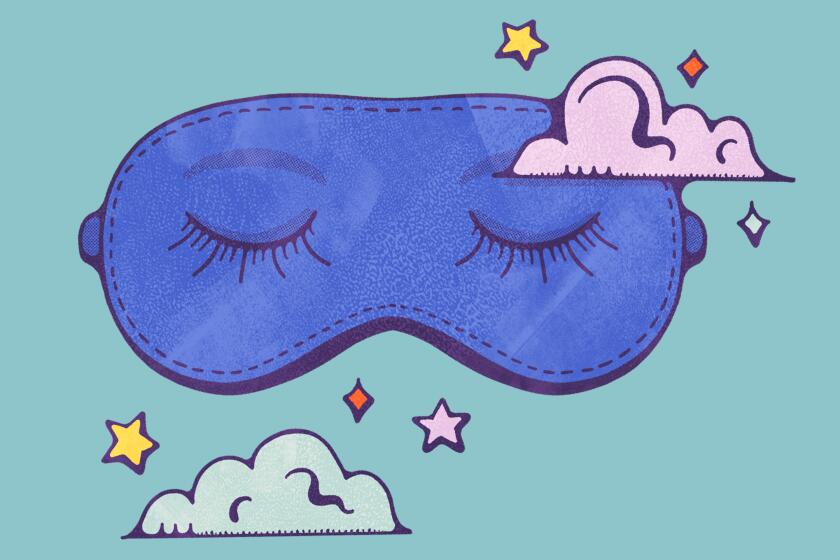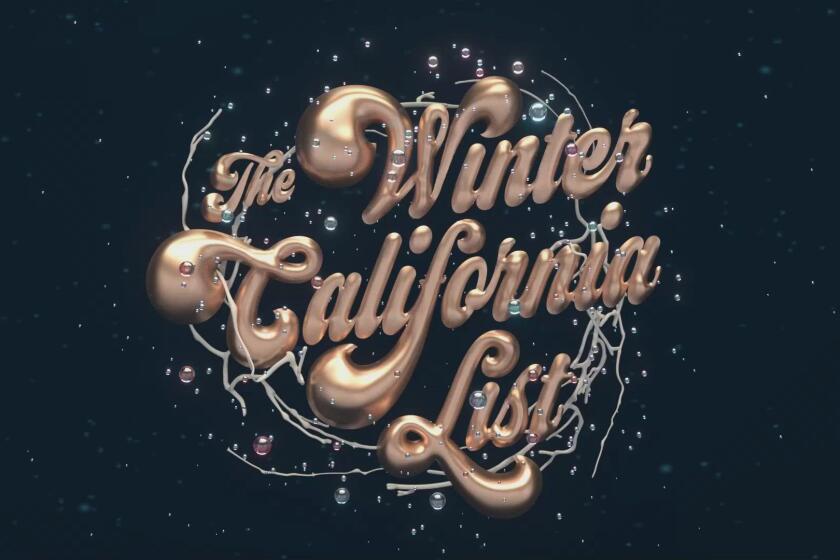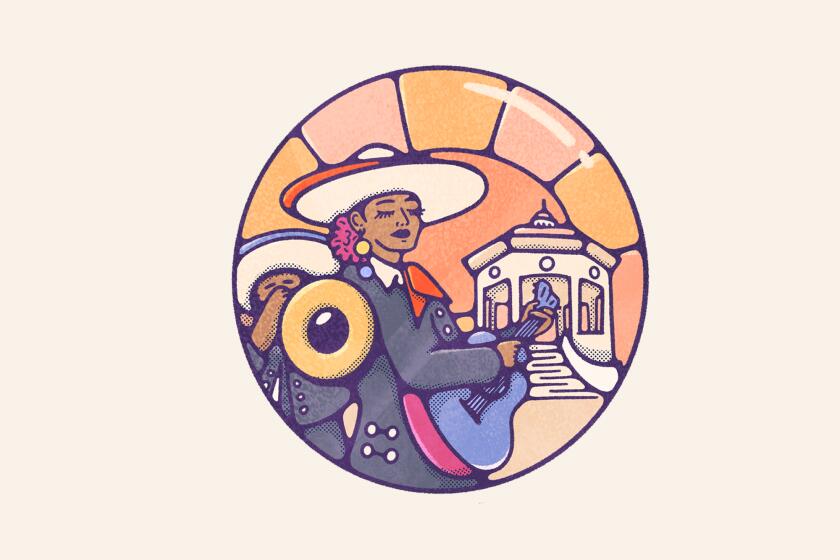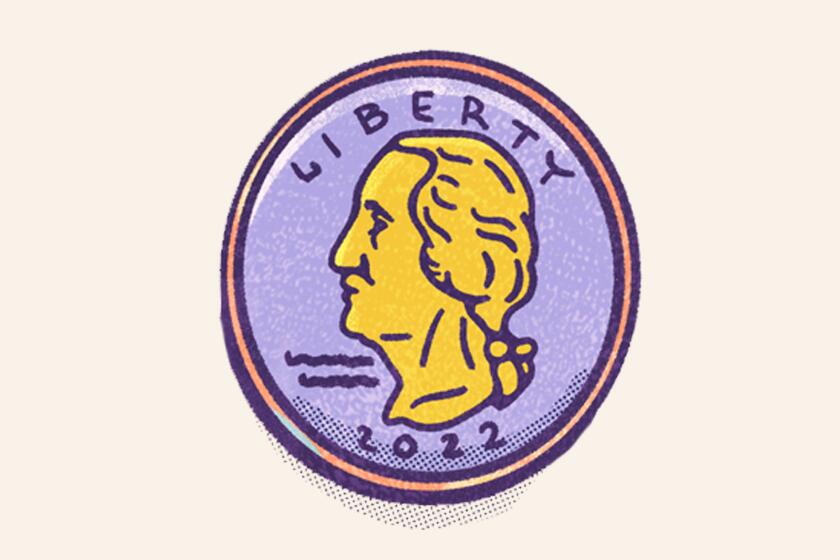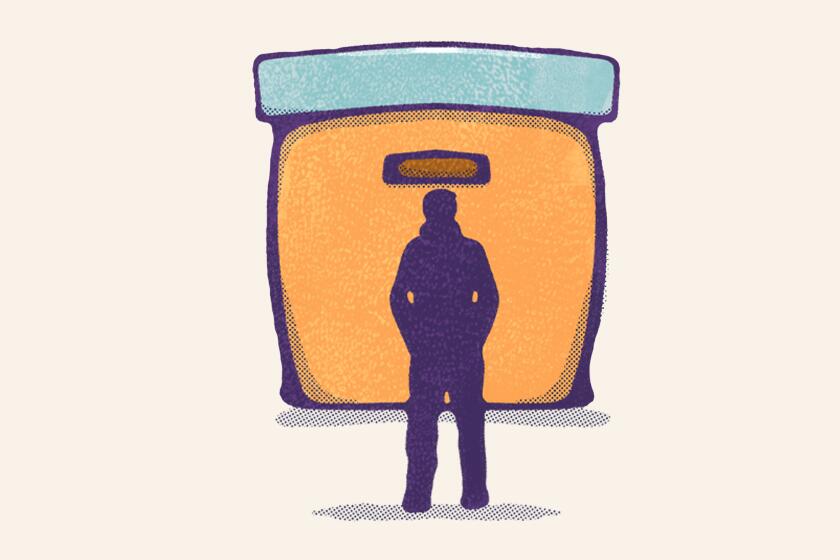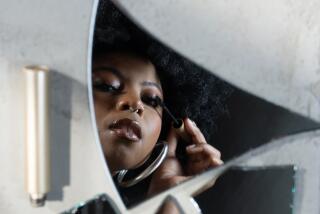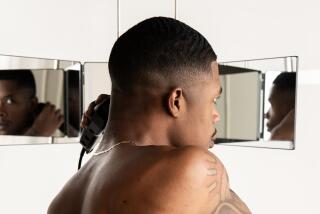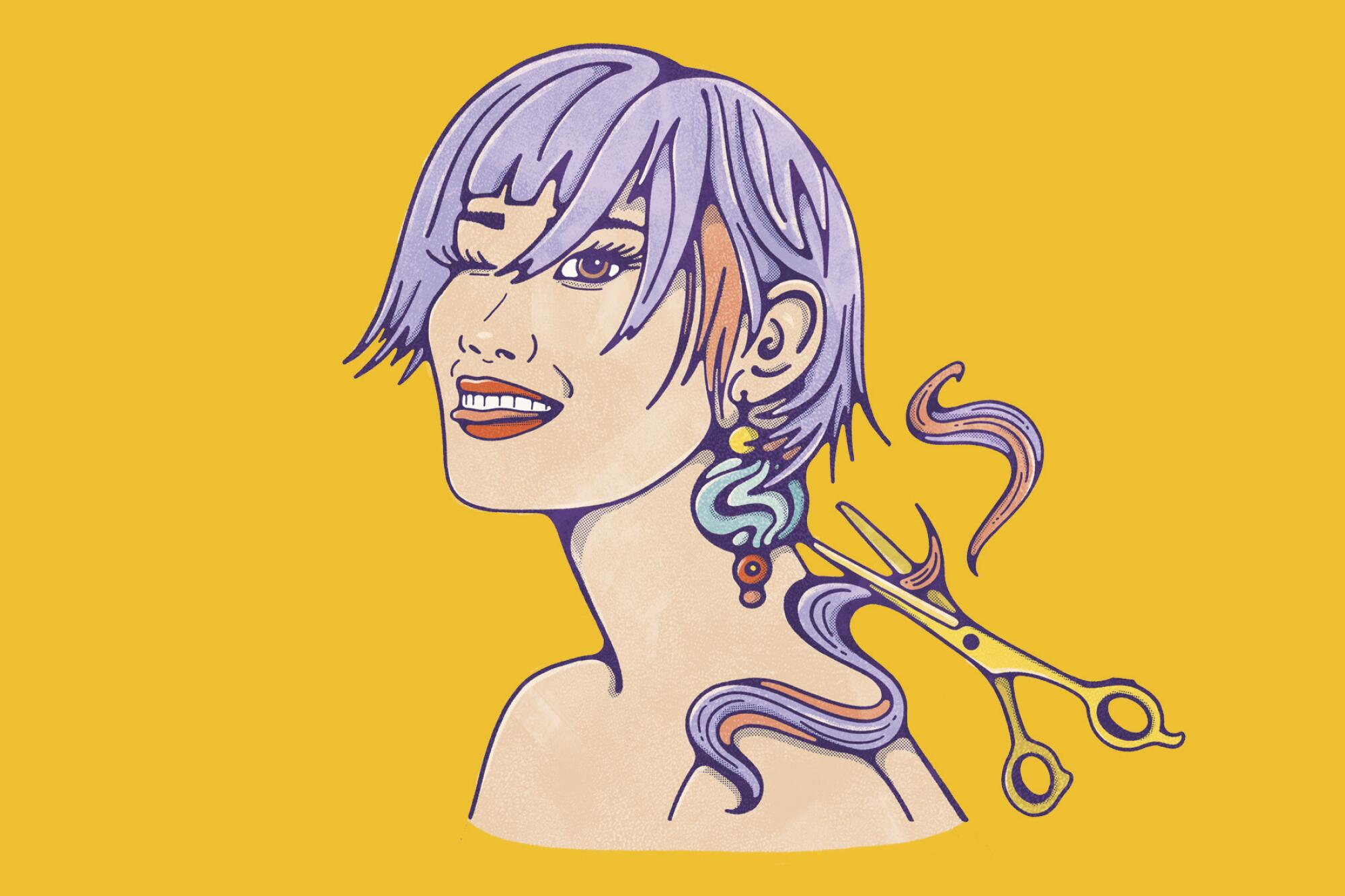
- Share via
An acquaintance of mine once commented that I should “never cut my hair short,” remarking that my long, dark hair appeared “cool” and made me look “even younger” than my biological age. At the time, as well as throughout most of my adult life, my hair has reached the middle of my back with a severe center part, remaining just unruly enough to evade being classified as “bed head.”
My hair embodied the ideal of effortlessness that fuels fashion and beauty headlines and shampoo advertisements in creating a false concept that there is good or bad hair — or any spectrum of measurement in between.
At the tail end of my 30s, I latched onto the acquaintance’s remark in a way that made clear how much of a blinding influence traditional societal constructs of beauty, youth and age have on me. I wasn’t as immune to these pressures as I had previously thought. Long (like, very long) hair was part of my game plan to look younger and how I’d keep a “cool” factor firmly planted in my immediate orbit with an impracticality that could only be tolerated by someone young and carefree. I envisioned my unruly mane as the most prominent part of my overall silhouette — a cartoon-like sketch with oversized hair that made an impression before you saw my face or heard my voice.
Recently a friend with waist-length locks said to me that she loves her long hair because “every inch longer is one year younger.” I agreed. That’s until the irksome weight entwined in my strands, first from an inaccurate (and perhaps unhealthy) attachment to a false symbol of youth and then from the ongoing mental roller coaster of the pandemic, pushed me to shed my hair in search of some levity. The shed entailed chopping 13 inches of hair off into a textured and layered short style with a deep side part, a result that has shades of ‘90s skateboarder-meets-the iconic geometric NancyKwan cut created by Vidal Sassoon in 1963.
Let me be clear: I have not had challenges with my hair or because of my hair. I have not been discriminated against, not been hired or been told to change my hair for any reason. I have not suffered hair loss because of an illness or trauma. Nor have I been neglected or underserved by the beauty or wellness industries when it comes to hair care or representation. There is no shortage of people with hair like mine in mainstream media or in the movies or on boxes of hair-growth gummies. On the contrary, I have always had the attitude of “It’s just hair,” which is the privilege that comes when the strands of dead cells attached to your follicles are what society deems as “good.” I had never thought that much about my hair because I did not have to.
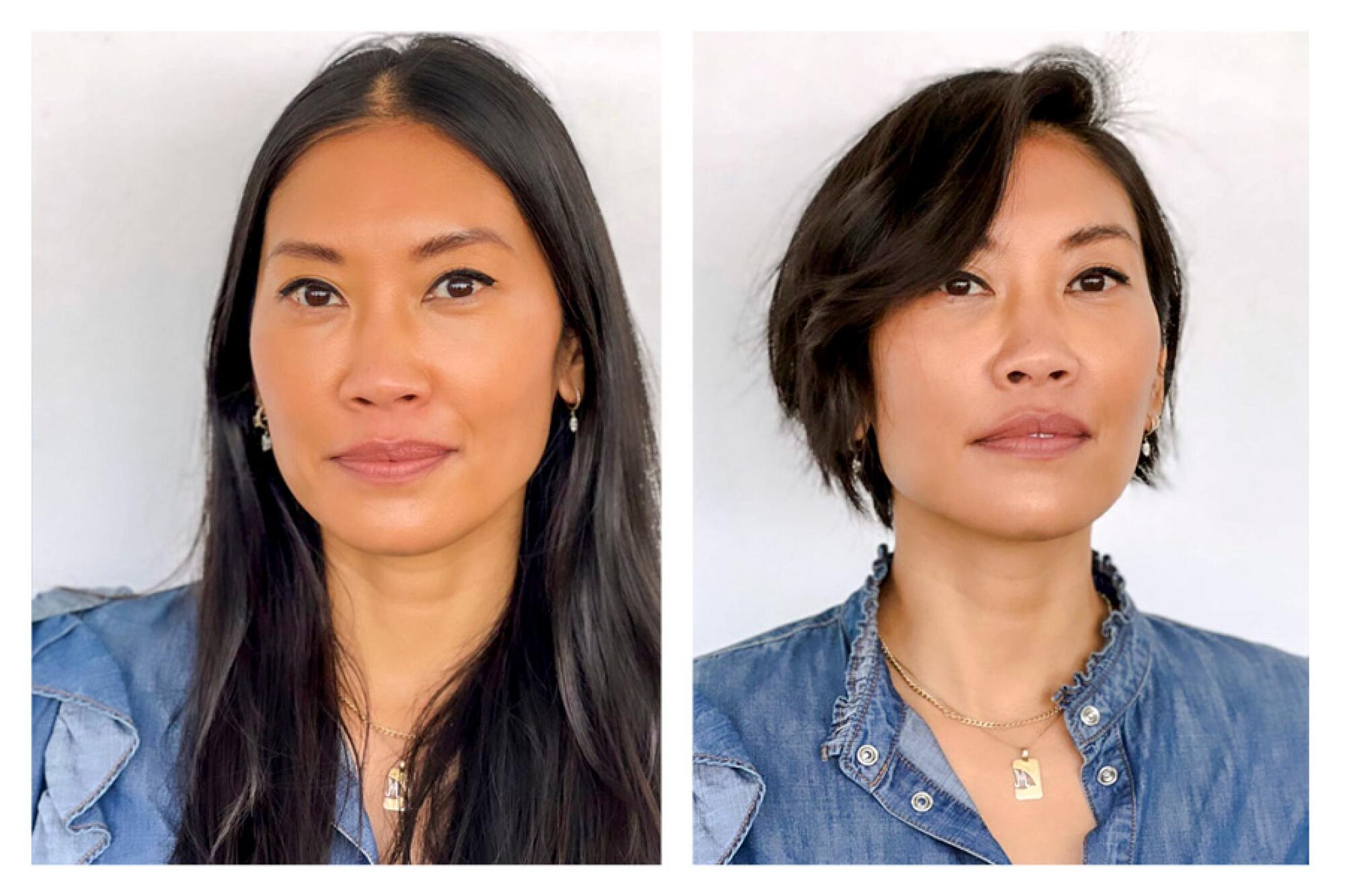
In my case, hair has been the proverbial tip of the iceberg on the path to self-realization and transformation — my hairstyle the relatively insignificant 10% above the waterline and the easiest thing to change about my appearance, especially when our pandemic expressions are currently, literally, masked. Like you, I’ve been living in the blur of the past two years in which time feels marked more by variants and vaccine availability and one Zoom meeting blends into the next. My 13 inches of heavy raven strands, it seemed, was creating even more blur, and it was time for some clarity.
Turns out, I am far from the only person on this particular hair journey. “Hair does hold energy,” says Michael Forrey, the hairstylist at Beverly Hills salon Striiike who cut off more than a foot of my hair in late November. “On a cellular level, it’s interesting to think our hair is dead cells. It’s life experience in a way. Cutting it is a dramatic way to step out of a situation and say, ‘I’m out, I’m done,’ marking a point of renewal.”
Forrey says he hasn’t cut as much hair in his two-decade-long career as he has in the last six months. Many of his clients have come seeking dramatically short cuts — shags, pixies and razored bobs.
“It’s the one thing attached to your person that says so much,” Forrey says. “From a visual perspective, it changes the face shape. It pops your cheekbones. It evokes so much personality. It goes beyond just a physical change. It actually brings out a character. This is the girl that’s been locked away, and she’s ready to come out.”
To decide to be someone else, spin the wheel and see where scissors in the deft hands of a stylist would take me felt like the first step to clarity. Who would I be without 13 inches of deep-black hair (that often got tangled around the buttons on my jacket, stuck under pillows or that my son would hold on to when he slept)?
Only with less hair could I springboard out of the current day into a stratosphere of my own making, exhausted of merely surviving and trying to recall what soaring above the dense forest of a seemingly endless pandemic feels like.
My hair tale is one as old as time, says Kiki Matoba, a Los Angeles-based reiki master and energy healer. “Around the world many cultures believe in the energetic significance of cutting hair,” she says. “Muslim and Hindu parents cut their child’s hair ceremoniously to energetically cleanse the baby of negativity and past lives. In New Zealand, a spell is uttered at hair-cutting to avert thunder and lightning. Some Native Americans believe cutting one’s hair is connected to making a change in one’s life, letting go of past misdeeds and beginning a new chapter.
If you dismissed the idea of self-care as self-induglent, then we have news for you: Self-care isn’t selfish. It’s survival.
“Hair can hold old energy simply with the mental and emotional attachment some have to their identity with their hair,” Matoba says. “So, when making a change of one’s image by cutting one’s hair, a shift in one’s energy field can occur with the vibrational frequency of self-love and/or self-confidence.”
Mohar Chaudhuri, vice president of social intelligence at marketing and communications firm Edelman Data & Intelligence in New York, was prompted to cut more than a foot off her hair last fall because of the weight of general pandemic stress and the stress around planning her pandemic wedding.
“I’ve maintained long hair ever since I was a little kid,” Chaudhuri says. “It was the most recognizable physical trait of mine. You could spot my unruly, wavy mane from a mile away. Raised in a South Asian household, my immigrant parents had a cultural obsession with long hair.” Nevertheless, she had New York-based stylist Mark Bustos cut her hair into a blunt razored bob that grazes her chin.
“I feel lighter. So much lighter,” Chaudhuri says. “From an emotional standpoint, it’s as if I let go of an entire chapter of my life. I also feel like I have this alter ego now. This short, straight-edge bob feels more fashion forward, more my vibe.”
Celebrity hairstylist Ursula Stephens, who counts Rihanna, Zendaya, Jodie Turner-Smith and Pom Klementieff as regular clients, says right now especially hair is mostly about bravery and making choices for yourself without the typical pressures of the prepandemic society.
“I’ve noticed more bravery when it comes to changing your look,” says Stephens, who’s based in New York. “People who were so afraid to try a cut now realize it’s really not a big deal. There are so many more important things happening. A lot of people are going through a period of self-reflection and of embracing their natural selves. Now is the time alone to figure out if you like something without the influence of everyone else — without the noise.”
In California, winter is not just about holiday lights and snow in the mountains. Here are our top 40 picks for wintertime adventures statewide.
Short hairstyles have seen an increase in searches year over year, according to Marta Topran, an L.A.-based beauty and fashion creator management lead at Pinterest, which now has a hair pattern tool so you can get a glimpse of what a trendy style will look like with your specific hair pattern. The most-searched styles on the social platform include bob-cut wigs, shaved-head dye designs and mullet hairstyles (which came in with a whopping 190% jump last year).
“At Pinterest, we’re predicting 2022 to be the year of the rebellious haircut,” says Topran, who got a big COVID-19 chop recently, trusting Siobhán Quinlan at the Cutler West Hollywood Salon, to cut 6 inches from her hair. “[The cut] made me feel lighter, more optimistic, and closer to my prepandemic self. Never underestimate the transformative power of a great haircut.”
Outside of any existential meaning or a significance to age, short hair, I’ve discovered, is just really, really chic. I have taken on a new persona of sorts. One that feels reminiscent of a ‘90s Linda Evangelista in a Peter Lindbergh photograph — an androgynous alter ego that dons less hair, different dimensions and, for the moment, feels more me.
